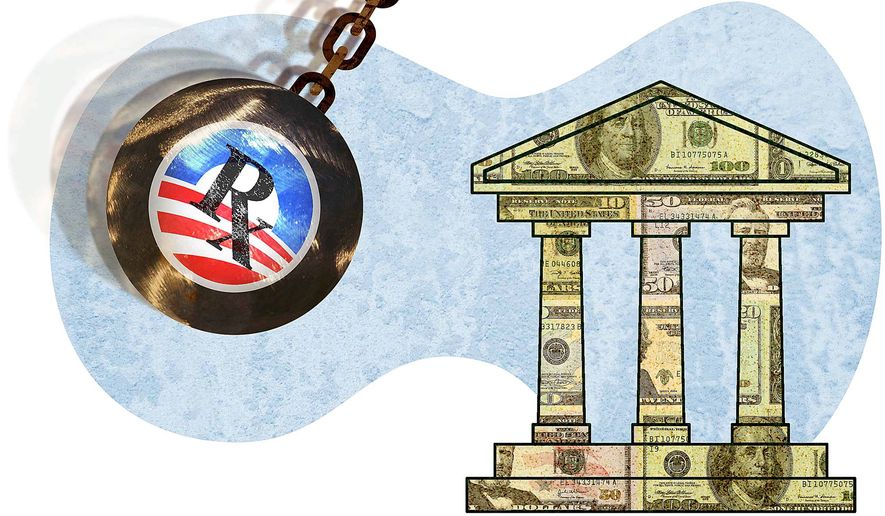OPINION:
More than a dozen years have passed since then-President Barack Obama unleashed his signature “Obamacare” program under the Affordable Health Care Act. It has since proved anything but affordable.
“Once this reform is implemented, health insurance exchanges will be created, a competitive marketplace where uninsured people and small businesses will finally be able to purchase affordable, quality insurance,” Mr. Obama said at the time, promising $1 trillion in deficit reduction over the course of two decades.
Flash forward to today, and the nonpartisan Congressional Budget Office anticipates our national debt will nearly double over the next 30 years, with health care costs as a leading driver. Federal health care spending is projected to rise 78% in the next decade, exceeding all other categories by 2030.
Meanwhile, the amount an average family has to pay in annual health insurance premiums has skyrocketed 267% since 2000, averaging an increase of about 5.8% per year — well beyond the 2.5% rate of inflation, according to KFF, a health policy research firm.
In 2000, health insurance premiums cost families about $6,000 a year. Last year, the average was $22,000 — the price of a small car.
Those with “Obamacare” plans can expect premiums to rise about 6% next year. Costs for employer coverage are also expected to surge around 6.5% for 2024, adding to the price tag for employer plans that already average more than $14,600 a year per employee. These massive expenses often lead businesses to offer less coverage, drop plans or lay off workers.
Rising hospital costs are a key element of the price increases, as hospitals seek more money from insurers.
“Inflation we saw a year ago is finally making its way into the contracts [between hospitals and insurers],” Tim Stawicki, the chief health care actuary at Willis Towers Watson, told The Wall Street Journal last month. “It’s like a delayed reaction.”
Add to that increased wages for doctors, nurse and other medical staff. Last week, the largest health care strike in U.S. history ended, as 75,000 health care workers across four states demanded higher pay after the COVID-19 pandemic led to longer hours and increased retirements, creating a staffing crisis.
Since Obamacare didn’t make health care more affordable, the Biden administration — staffed by Obama White House alumni — wanted a second bite at the apple.
The Affordable Care Act expanded Medicaid to cover 20 million more people, and Mr. Biden’s American Rescue Act (a key driver of inflation) expanded it further, allowing states to extend coverage to new mothers. His budget aims to get at least 2 million more Americans on Medicaid, driving up the expense of this federal entitlement.
Mr. Biden’s Inflation Reduction Act put into law policies mandating government-set prices for medicines covered by Medicare, which some argue will decrease the availability of drugs given to older Americans on the plan while also discouraging innovation in health care.
Gearing up for the 2024 election, Mr. Biden is aiming to use the federal government’s power to crack down on short-term health insurance plans, which he has deemed “junk.” The move will result in fewer choices in the marketplace and, inevitably, higher prices for the plans that are available.
Ronald Reagan once famously said: “The most terrifying words in the English language are: I’m from the government, and I’m here to help.”
In trying to tackle our nation’s health care crisis, Democrats have only made it worse.




Please read our comment policy before commenting.